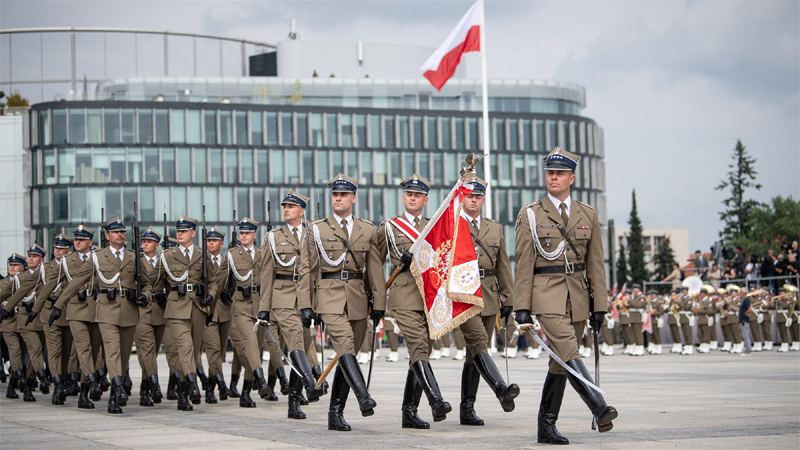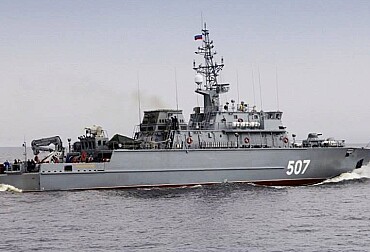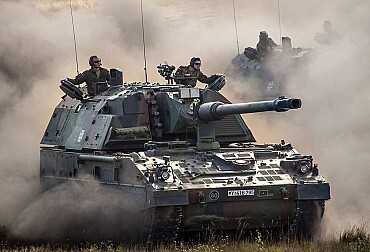Poland’s “Always Ready” Program: Military Training, First Aid, Survival Skills, and Cyber Hygiene
Amid growing tensions on its eastern flank, Poland is implementing an unprecedented initiative: by the end of 2026, up to 500,000 volunteers are expected to undergo military training. This measure aims to integrate the civilian population into the national defense posture through the newly named “Always Ready” program.

In November 2025, Poland launched a vast citizen mobilization plan focused on defense. The state intends to unite the army and society in the face of current challenges. At a time when the war in Ukraine is forcing strategic redefinitions, this move reflects a shift in the way Warsaw intends to build its military and civilian capacity.
The Polish Ministry of Defense announced that Poland would roll out a training program open to all volunteer citizens. The country launched a new military training program this month as part of a broader plan to train around 400,000 people by 2026. The program aims to reach up to 100,000 participants by the end of 2025 in its initial phase. Defense Minister Władysław Kosiniak-Kamysz said, “We are living in the most dangerous times since World War II.”
The program, called “W Gotowości” (“Always Ready”) in Polish, covers basic modules such as military training, first aid, survival, and cyber hygiene. It is open to a wide audience, targeting schoolchildren, employees, retirees, and businesses. Poland is strategically located, bordering Ukraine and Russia’s Kaliningrad exclave, which reinforces the perception of a threat in its immediate neighborhood. Strengthening defense capabilities therefore goes beyond the professional army: it is a global mobilization of society.
According to Chief of General Staff Wiesław Kukuła, the main objective is “to strengthen the resilience of citizens and communities, and to increase the availability, preparedness, and capacity of reserves.” The Polish state offers a model in which the line of defense is no longer limited to professional soldiers but includes citizens. The increase in power is also budgetary: Poland plans to allocate 4.8% of its GDP to defense in 2026, making it one of the NATO members that devotes the largest share to this effort.
The approach is ambitious but poses several major challenges. Training up to 500,000 volunteers in a short timeframe imposes logistical, human, and organizational constraints. The voluntary nature of the program raises questions: without obligation, citizen response may not meet the set objectives. Indeed, the diversity of profiles—students, employees, retirees—implies varying levels of prerequisites, which may make it more difficult to ensure the homogeneity of the training.
Above all, this strategy places Poland in the midst of a fundamental transformation: the creation of a “citizen army” capable of supporting the professional army in the event of a crisis. This raises the question of the relationship between regular forces, reserves, and civilian volunteers. In a context where Poland is clearly signaling its intention to strengthen its stance toward Russia, this approach could be perceived as an escalation—or at the very least, a redefinition of society’s role in national defense.
Poland’s “Always Ready” program builds on a long history of civilian involvement in defense, dating back to the partitions of the 18th century and the partisan resistance during World War II. In the post-Cold War era, Poland joined NATO in 1999 and has since modernized its armed forces dramatically. The country currently maintains around 200,000 active-duty personnel, with plans to expand to 300,000 by 2035. Recent procurements include 1,000 K2 tanks from South Korea, 96 Apache helicopters from the U.S., and F-35 fighter jets, reflecting a multi-billion-euro investment in interoperability with NATO allies. The volunteer training initiative complements these hardware upgrades by focusing on human capital, ensuring that a large reserve pool can be activated quickly in hybrid warfare scenarios, such as cyberattacks or border incursions. Early reports indicate strong initial interest, with thousands registering in the first weeks of November 2025, driven by patriotic sentiment and the visible impact of the Ukraine conflict on Polish borders, where over 2 million Ukrainian refugees have been hosted since 2022.
Logistically, the program is structured in phases. The 2025 pilot targets urban centers like Warsaw, Kraków, and Gdańsk, utilizing existing military bases, schools, and corporate facilities for weekend or evening sessions to minimize disruption to daily life. Modules are modular: a basic 16-hour course covers firearms handling and evacuation drills, while advanced tracks extend to 40 hours with specialized skills like drone operation or medical triage. Incentives include tax credits for participating employers, certification for job applications, and priority in state employment for completers. The Ministry of Defense has partnered with the Polish Scouting Association and veteran organizations to deliver content, drawing on experienced instructors. Cybersecurity training addresses rising threats; Poland reported over 10,000 state-sponsored cyber incidents in 2024 alone, many attributed to Russian actors. Survival modules incorporate lessons from Ukraine, emphasizing urban combat and resilience against infrastructure disruptions.
Comparatively, the Czech Republic, Poland’s southern neighbor and fellow NATO member, adopts a more measured approach to civilian defense preparedness. While Poland aims for mass mobilization of up to 500,000 volunteers by 2026, the Czech Active Reserve system currently encompasses only about 4,000 personnel, with voluntary training and no nationwide compulsory element for civilians. The Czech Ministry of Defence focuses on 25,000 active professional troops and integrating with Visegrád Group allies, allocating roughly 2% of GDP to defense in 2025 – less than half of Poland’s planned 4.8%. Czech programs like “Dobrovolné předurčení” (Voluntary predestination) offer short courses in first aid and basic military skills to around 1,000 participants annually, primarily through schools and youth organizations, but lack the scale and urgency of “W Gotowości.” This difference stems partly from geography: the Czech Republic does not share a direct border with Russia or Ukraine, reducing perceived immediate threats.
Further contrasting the two nations, Poland’s initiative reflects a societal shift toward “total defense” inspired by Scandinavian models like Sweden’s recent reinvigoration of civil preparedness, whereas the Czech Republic prioritizes EU and NATO collective deterrence over domestic mass training. In 2024, Czech public opinion polls showed 65% support for increased defense spending but only 40% willingness for personal involvement in reserves, compared to Poland’s 70%+ approval ratings for volunteer programs amid heightened security concerns. Both countries, however, collaborate within the EU’s Permanent Structured Cooperation (PESCO) on projects like cyber rapid response teams. Poland’s bolder strategy could pressure Prague to expand its reserves, especially as regional tensions escalate, but for now, the Czech model emphasizes quality over quantity, leveraging a highly educated population for specialized roles rather than broad civilian militarization.
In summary, Poland’s “Always Ready” program marks a proactive response to geopolitical realities, blending historical resilience with modern strategic needs. By empowering citizens as an extension of the state’s defense apparatus, Warsaw not only bolsters deterrence but also fosters national unity. Success will hinge on sustained participation, effective resource allocation, and international support within NATO frameworks. As Europe navigates an era of renewed great-power competition, such initiatives underscore the evolving nature of security in the 21st century, where the frontline extends into every community.









